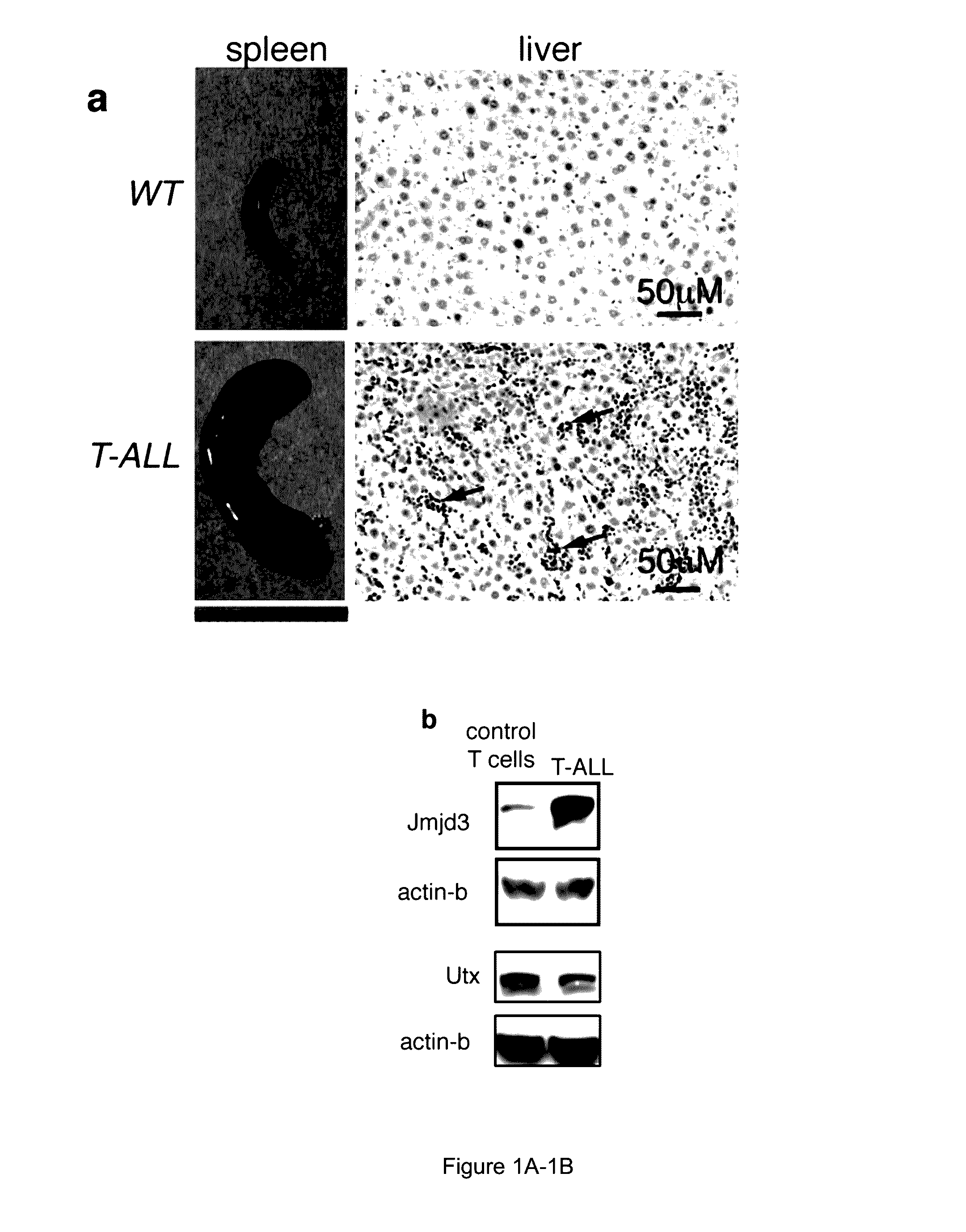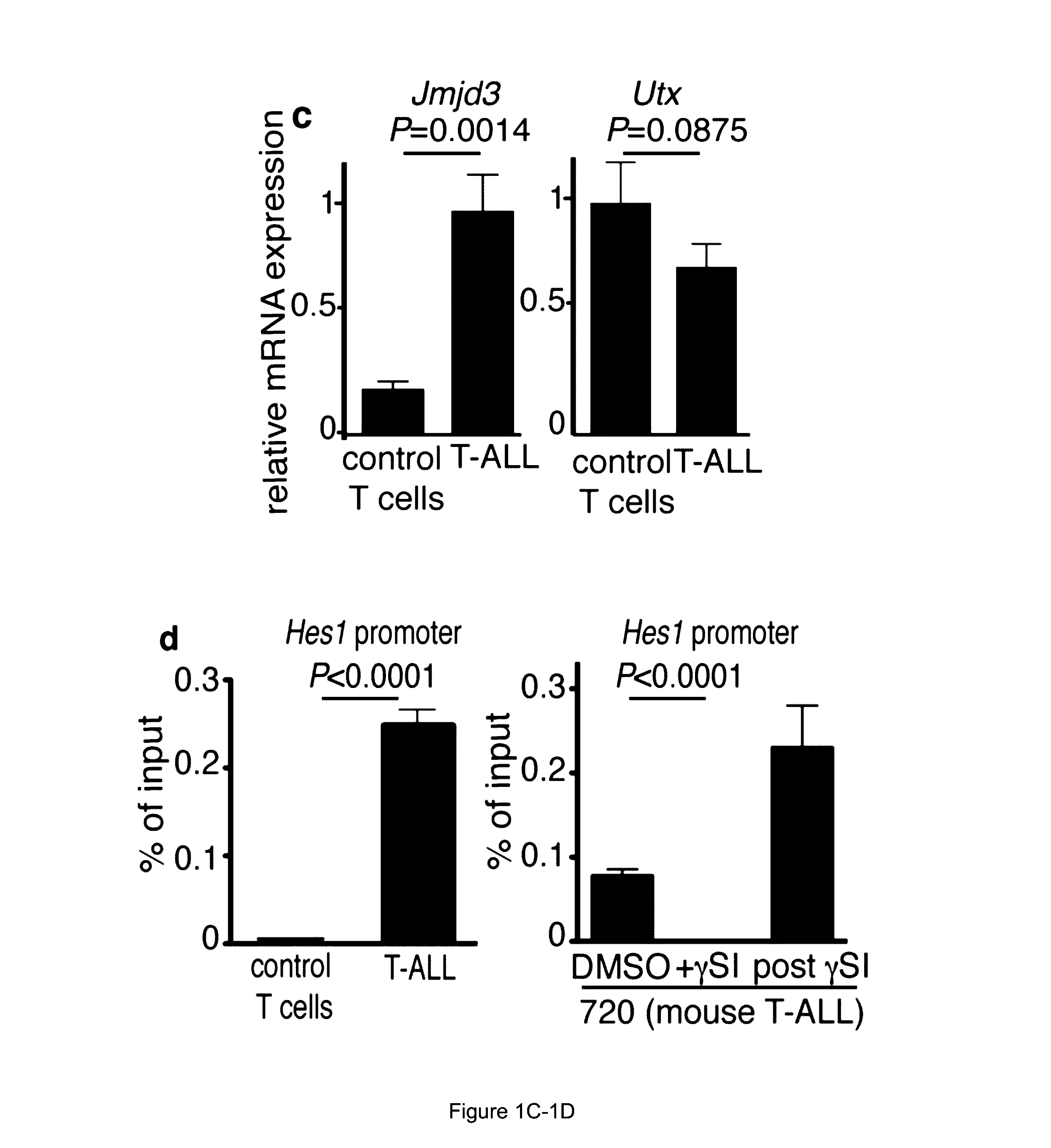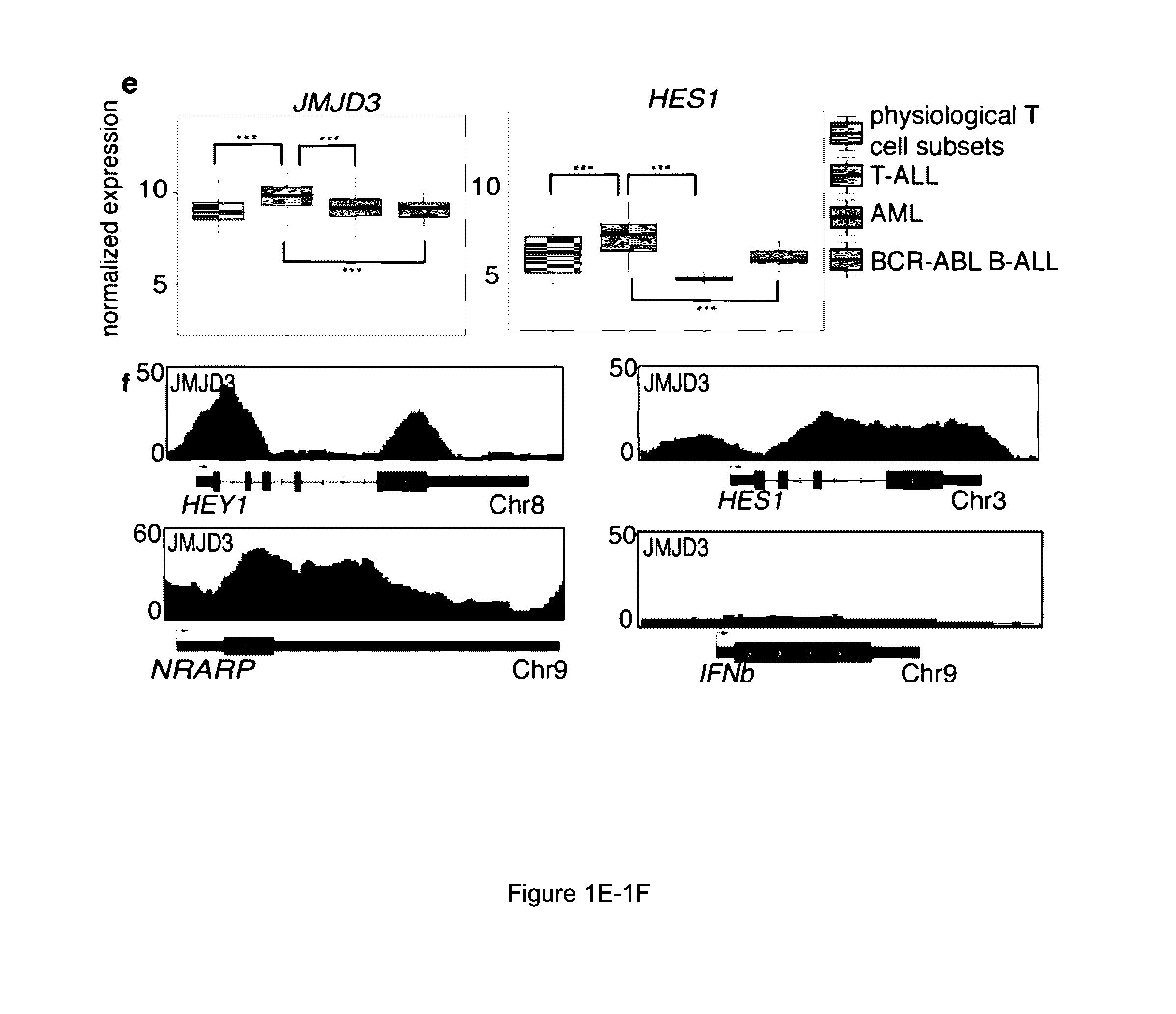Methods for treating t-cell acute lymphoblastic leukemia
a lymphoblastic leukemia and acute treatment technology, applied in the field of acute treatment of t-cell acute lymphoblastic leukemia, can solve the problems of uncharacterized direct modulator of the oncogenic state of these two demethylases, unfavorable treatment effect, and unfavorable treatment
- Summary
- Abstract
- Description
- Claims
- Application Information
AI Technical Summary
Benefits of technology
Problems solved by technology
Method used
Image
Examples
example 1
JMJD3 is Highly Expressed in T-ALL and Controls the Expression of Important Oncogenic Factors
[0121]In recent studies, researchers have revealed that PRC2 has a key tumour-suppressor function, catalyzing the methylation of H3K27 (Zhang et al., “The Genetic Basis of Early T-cell Precursor Acute Lymphoblastic Leukaemia,”Nature 481:157-163 (2012); Ntziachristos et al., “Genetic Inactivation of the Polycomb Repressive Complex 2 in T Cell Acute Lymphoblastic Leukemia,”Nature Med. 18:298-303 (2012); Simon et al., “A Key Role for EZH2 and Associated Genes in Mouse and Human Adult T-Cell Acute Leukemia,”Genes Dev. 26:651-656 (2012), which are hereby incorporated by reference in their entirety). Since net H3K27me3 levels are dictated by the balance between histone methylation and active histone demethylation, it was hypothesized that the removal of methyl groups from H3K27 is also an important process in T-ALL progression. The possible roles of H3K27 demethylases in T-ALL were therefore inves...
example 2
Dissecting the Oncogenic Role of JMJD3 in T-ALL
[0125]Protein immunoprecipitation studies in 293T cells (human embryonic kidney cells), as well as in mouse T-ALL cell lines, showed that JMJD3 is part of the NOTCH1 transcriptional complex, as it interacts directly with NOTCH1 and MAML1 (FIGS. 3A-3C). By contrast, there was no NOTCH1 interaction with EZH2 or UTX. As JMJD3 has been shown to be a member of MLL complexes (De Santa et al., “The Histone H3 Lysine-27 Demethylase Jmjd3 Links Inflammation to Inhibition of Polycomb-Mediated Gene Silencing,”Cell 130:1083-1094 (2007), which is hereby incorporated by reference in its entirety), whether JMJD3 interacted with WDR5, a key subunit of the MLL complex, was tested. It was found that JMJD3 interacted with WDR5 (FIG. 3B), suggesting a potential NOTCH1JMJD3MLL complex on target promoters.
[0126]To clarify the role of JMJD3 and UTX in the maintenance of leukaemia, genomic knockdown of JMJD3 in human T-ALL cells was performed using two short h...
example 3
The Demethylase UTX Acts as a Tumour Suppressor in T-ALL
[0127]To examine the potential roles of UTX and JMJD3 in the induction of T-ALL, bone marrow transplantation experiments were performed using haematopoietic stem cells from Utx and Jmjd3 germline knockout mice. Although female Utx− / − mice die at E9.5 because of defects in mesoderm development, a small fraction of male Utx− / Y mice survive to adulthood as a result of compensation by UTY (Welstead et al., “X-linked H3K27me3 Demethylase Utx is Required for Embryonic Development in a Sex-Specific Manner,”Proc. Natl. Acad. Sci. USA 109:13004-13009 (2012), which is hereby incorporated by reference in its entirety). Despite T-cell development being largely unaffected (FIGS. 7A-7B), T-ALL kinetics were significantly faster on the Utx− / Y background, as determined by leukaemic burden quantification in the peripheral blood and infiltration of the spleen and liver (FIGS. 8A-8C and FIGS. 7C-7E). Moreover, mice succumbed to the disease with a...
PUM
| Property | Measurement | Unit |
|---|---|---|
| Cell proliferation rate | aaaaa | aaaaa |
| Chemotherapeutic properties | aaaaa | aaaaa |
Abstract
Description
Claims
Application Information
 Login to View More
Login to View More - R&D
- Intellectual Property
- Life Sciences
- Materials
- Tech Scout
- Unparalleled Data Quality
- Higher Quality Content
- 60% Fewer Hallucinations
Browse by: Latest US Patents, China's latest patents, Technical Efficacy Thesaurus, Application Domain, Technology Topic, Popular Technical Reports.
© 2025 PatSnap. All rights reserved.Legal|Privacy policy|Modern Slavery Act Transparency Statement|Sitemap|About US| Contact US: help@patsnap.com



